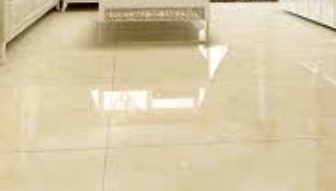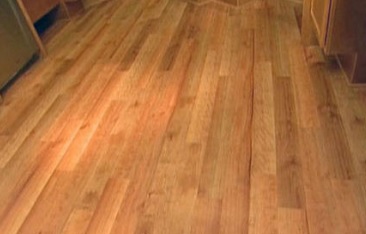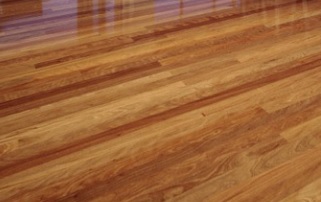- In this blog post, you will read about what is flooring, the characteristics of a good floor, components of the floor, and types of flooring.
Table of Contents
Flooring:
A permanent covering over the floor structure with a finish material to provide a walking structure is termed as flooring.

Characteristics Of Good Flooring:
A good quality floor should possess the following Characteristics:
- It should be durable.
- The floor should be easy to clean.
- It should not produce any sound on walking or should be noiseless.
- Flooring must have a good appearance.
- It should be free from dampness.
- It should heat resistant and fire-resistant.
- The maintenance cost of a floor should cheap.
Components Of A Floor:
Normally, there are two parts of a floor.
- Sub Floor or Base Course
- Floor Covering or Flooring
1. Sub Floor or Base Course (Floor Base):
The structural component which supports the floor covering is known as subfloor or base course. For every floor, the floor base object is to give proper support to the floor covering so that it does not settle down, and also it provides thermal insulation and damps resistance.
2. Floor Covering or Flooring:
Over the floor base, a covering is done with finishing materials for residential and commercial buildings and each material has its own advantages and disadvantages. Mostly common floor covering materials are mud, bricks, Wood or timber, flagstones, asphalt, concrete, mosaic, tiles, marbles, P.V.C, etc.
Types Of Flooring:
The most common types of flooring are as follows:
- Mud Flooring
- Brick Flooring
- Stone Flooring
- Tiled Flooring
- Cement Concrete Flooring
- Mosaic or terrazzo flooring
- Timber Flooring
1. Mud Flooring:
This type of flooring is mostly found in villages and in low-cost residences for poor people. Mud flooring is hard, cheap, and waterproof and it is cool in summer and hard in winter.

Method of Construction:
- First earth is filled up with sand up to the plinth level and by adding water it rammed to consolidate the well.
- Suitable earth in crushed form is mixed with little water.
- Prepared earth is spread over the base to the thickness of 25-50 mm blend by ramming without water.
- The finished surface is then given a wash of any dung and water mixture.
2. Brick Flooring:
This flooring is suitable for garden paths and garages. It is very economical durable and easy to construct and is not slippery. Bricks are arranged in diagonal or zigzag bonds.

Method of Construction:
- Up to the plinth level sand or earth is filled in layers and compacted well with water.
- And after this, a base coarse of cement concrete of ratio 1:4:8 or 1:5:10 is laid all over the entire floor. And in this base coarse a slope is required for proper disposal of water used for washing.
- The entire floor should be cured for 7 days.
3. Stone Flooring:
This stone flooring is hard, durable, economical, easy to construct, and repaired easily.

There are two types of stone flooring:
- Polished Stone Flooring.
- Unpolished Stone Flooring.
1. Polished Stone Flooring:
It is a very good quality flooring and is used in all types of flooring to a thickness of 20mm.it costs high and is elegant in appearance easy to clean. Marble and granite are used in this type of flooring. Marble flooring is very common and it is costlier and available in the market with the different cut sizes.
Method of construction:
- The cement concrete of the sub-base layer is laid and then a layer of cement mortar of a thickness of 20mm is to be spread.
- Then a slab of a specific size is placed on this layer and with a wooden mallet tapped gently.
- After this slab is placed on this mortar layer so that it gets allowed to harden slightly and a cement slurry has been spread over it with 4kg per sqm.
- After that final slab laid in the same position and lightly tapped and tapped to have a level surface
- All the slab should be laid similarly and curing should be done for 7 days.
2. Unpolished Stone Flooring:
A stone slab of 20-40 mm thickness is used. Cut sizes of 30*30 cms to 60*150 cms are available in the market.
4. Tiled Flooring:
It is one of the commonly used floorings in building construction. Depending upon the type of tile used it can be classified as follows:
- Glazed tile flooring
- Terrazzo tile flooring
- PVC tile flooring
This type of flooring is easy to clean, elegant in appearance, durable reparable but costs high. One 0f the demerit is that it is slippery when wet. And the merit of using tile flooring is that it can be moved to an upper floor.
Glazed Tile Flooring:
Today various types of glazed type floor are available in the market and are available in different shades and designs so that interior decoration gets suits.

Method of construction:
- Cement concrete is laid as a sub-base and allowed to harden. To provide a key to future layers the surface should be scratched.
- 1:3 of cement mortar is laid over the subgrade to a thickness of 10 to 12 mm and for a day it is allowed to harden.
- On the next day, cement slurry is put on the bedding mortar course, and after that, the tile is put on that position and tapped gently with a mallet. Care should be taken to see the joints are straight.
- As thin as possible joints should be there and after that surface is wiped clean.
- The entire flooring should be cured for 7 days.
Terrazzo Tile Flooring:
These tiles are available in the market in standard sizes. Tiles are made and composed of cement mortar ratio 1:3 layer backing and 5 to 6 mm thick layer wearing of cement.

PVC Tile Flooring:
PVC tile flooring has a smooth surface and is easy to clean. It is elegant, resilient easy, and quick in construction. This type of flooring is available in a single color combination of different colors and is very much suitable for dining rooms, bedrooms, and living rooms.
The primary disadvantage of PVC flooring is that it is not fire-resistant.

5. Cement Concrete Flooring:
It is one of the commonly used types of flooring and is best suited for all types of rooms. Cement concrete flooring is durable, smooth, pleasing in appearance, possesses good wear properties, and is economical. The only disadvantage of this type of flooring is that it cannot be repaired up to the mark.
Method of Construction:
- plinth filling by morum or earth is done up to 10cm below the floor level and compacted well. Over this compacted surface a layer of sand to a thickness of 10cm is spread and compacted. Or if sloped is required provide the slope.
- The cement concrete of ratio of 1:4:8 and 1:5:10 ( cement, aggregate and over burnt brick aggregate is led to the thickness of 10cm and compacted well. For sufficient time it is allowed to harden.
- When the area is totally hardened, the entire area is been cleaned and the entire area is divided into 1*1 m to 2*2 m by using glass and aluminum strips of thickness 3mm
- After this, the water is sprinkled to the surface and a smooth coat slurry of cement is applied to it.
- Curing should be done for 7 days.
6. Mosaic or Terrazzo Flooring
Terrazzo is the most common type of flooring, but when compared to plain cement concrete cement flooring it is more expensive. It is easy to clean elegant in look and has a glossy and smooth finish. There are two layers in this type of flooring bottom layer is cement concrete of ratio 1:2:4 laid with a thickness of 20-25 mm and the second layer is marble chips and cement and a mixture with a proportion of 1:5 cement to chips laid to a thickness of 6mm.

Method of Construction:
- The preparation of sub-base and laying of base concrete will be carried out as same we have constructed cement concrete flooring.
- As similar to cement concrete flooring the entire area is divided into panels with aluminum or glass strips. These panels are provided so that there will be no crack to develop in the future due to shrinkage.
- The surface of the cement concrete base should be clean of all dirt, mortar, dust plastics, etc. then we put a wash of neat cement slurry
- The bottom layer of cement concrete of ratio 1:2:4 is laid to a thickness of 20 to 25mm compacted and leveled .when this surface becomes hard the wearing layer of cement and marble chips are mixed.
- With the gunny bags, the surface should be covered and left undisturbed for 2 days. A coat of slurry is applied and left for 6 days and then curing is done.
- After 6 days we ground a surface with carborundum stone of different grades with coarse to finer ones. and after rubbing should be done in order to get a clear and uniform granular appearance. We will keep the surface wet during all these days.
- After that surface is rubbed with oxalic acid powder so as to get a glossy finish.
7. Timber Flooring
Timber flooring is normally used in halls, auditoriums, dance halls, etc., but nowadays the use of wooden flooring in residential buildings is becoming popular.
In hilly areas, timber flooring is becoming popular due to its low cost and easy availability.
The main drawback of the timber flooring is dampness. To avoid dampness in the timber flooring, a damp-proof course (D.P.C) should be provided.

There are two types of timber flooring one is the suspended type i.e supported above the ground and another one is the solid type which is fully supported on the ground.
Conclusion:
Today you have gained some knowledge about flooring and types of flooring. If you know any other types of floor, please comment below. I will consider it in my blog article.
FAQS
If you want to make a bold statement, try adding a colorful or patterned carpet to your living room.
For high-traffic areas, consider vinyl or porcelain tile flooring, which are water and stain-resistant.
Hardly! Hardwood flooring has timeless appeal, and today’s finishes and styles make them more durable than ever.
Not at all! Carpet continues to be a popular flooring option due to its comfort and versatility.
Laminate flooring is a great choice for those who want quick and simple installation and low-maintenance.
Light-colored and light-textured flooring, such as hardwood or tile, can help make a small room feel more spacious.
Absolutely! Certain flooring options, such as bamboo and cork, can actually help purify the air inside your home.
Vinyl or tile flooring is the best choice for pet owners, as they are easy to clean and don’t absorb pet odors.
Yes, flooring can play a significant role in energy efficiency. Consider cork or bamboo flooring, which both have insulating properties.
Of course! Choose flooring options like bamboo, cork, or reclaimed wood, which are sustainable and look great too.
